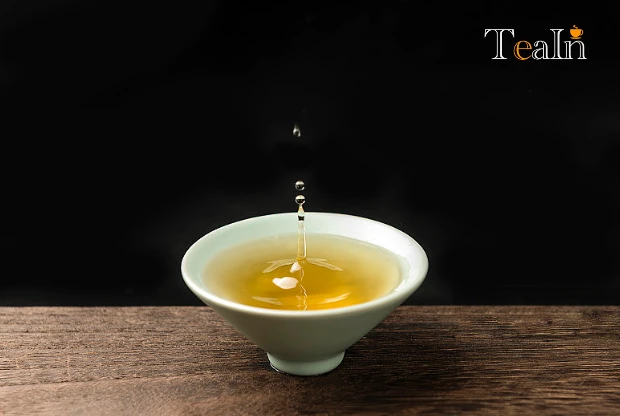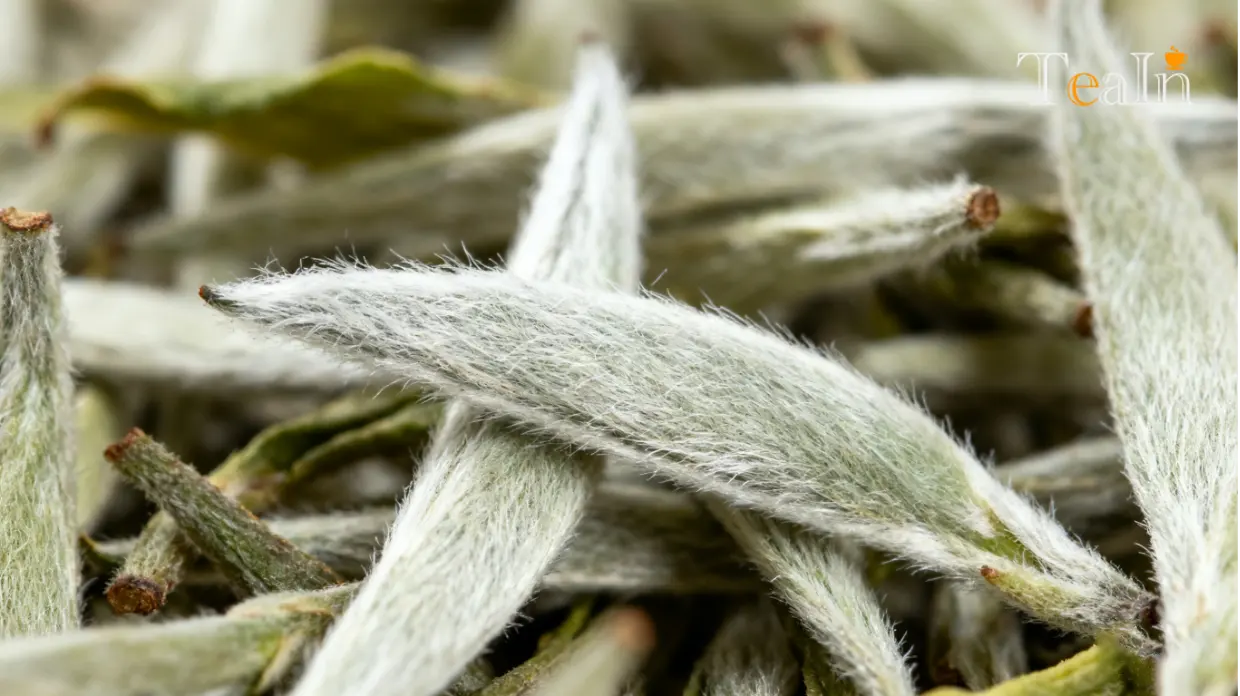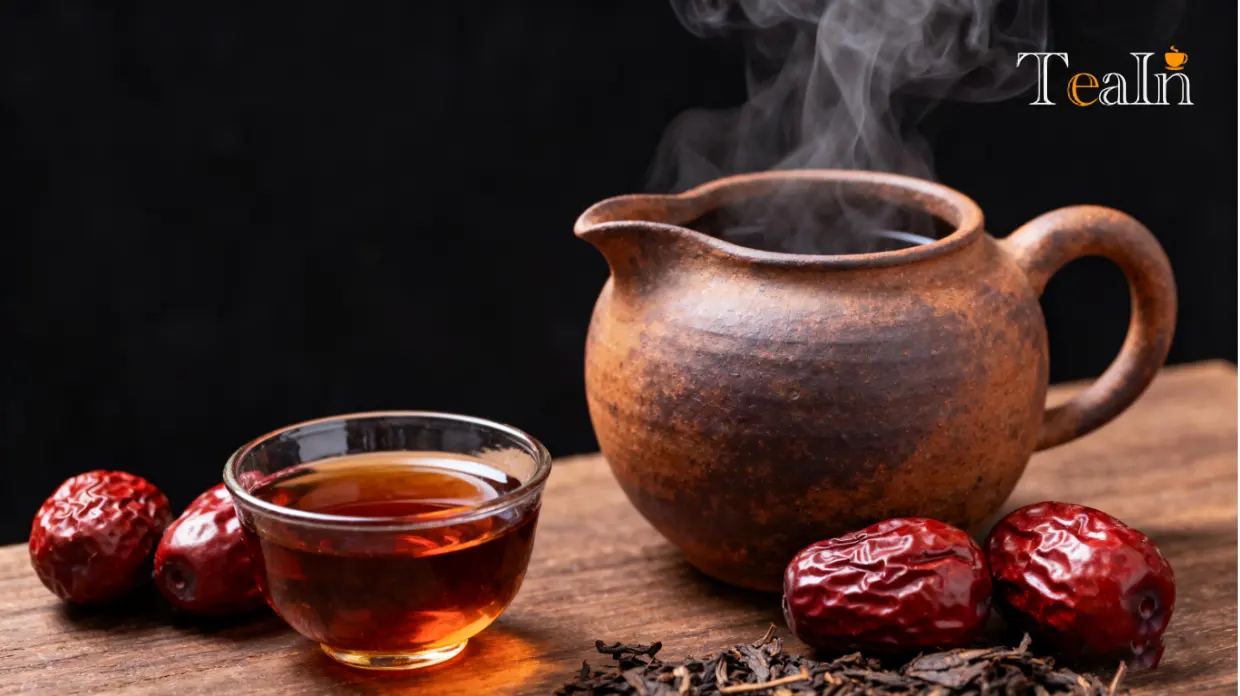The Aroma World of White Tea: From Fresh Downy Notes to Mellow Aged Tones

Much of the joy in tea tasting lies in perceiving its aroma. When wisps of tea scent linger at your nose—sometimes fresh, sometimes sweet, sometimes calm—this vague yet vivid sensory experience often touches the heart before the taste itself. As a type of tea with exceptionally rich aromas, white tea’s scents stem from both the natural qualities of its raw materials and the gradual transformation over time. From the vibrancy of new tea to the richness of aged tea, each aroma tells a unique story. Today, let’s dive into the aromatic world of white tea, exploring the characteristics and origins of its common scents. Even without professional tasting experience, you can easily appreciate the subtlety and beauty within.
I. Core Aromas of White Tea: Gifts from Nature and Time
White tea’s aromas contain no artificial additives. They emerge entirely from the terroir where the tea trees grow, the tenderness of the raw materials, and the natural transformation during aging. Different aromas correspond to different states of the tea, each with its own unique charm.
1. Downy Fragrance: The "Fresh Vitality" of White Tea
Downy fragrance is one of the most iconic aromas of Fuding white tea, derived from the fine downy hairs on the back of young tea buds. When dried, these hairs take on a silvery-white hue, not only giving the dry tea a frosty appearance but also carrying a fresh, natural scent.This fragrance is extraordinarily gentle—reminiscent of the crisp aroma of newly sprouted grass, with a hint of sweet freshness from plants after rain. It is not intense but 通透 (transparent), and a deep inhale brings a sense of physical and mental relaxation. Notably, downy fragrance is not static: in new tea, it is bright and lively; as aging progresses, it gradually transforms into a warm scent similar to sun-dried rice, shifting from "youthful tenderness" to "mellow warmth."Downy fragrance is most prominent in Silver Needle White Tea (after all, Silver Needle consists entirely of buds, with the densest downy hairs), followed by high-grade White Peony. The fine down floating on the surface of the brewed tea is the source of this aroma.

2. Honeyed Aroma: The Long-Lasting "Sweet Afterglow"
Honeyed aroma is a highly recognizable sweet scent in white tea, particularly common in Silver Needle. It persists for a long time during storage, making it a hallmark of high-quality white tea.Unlike the cloying sweetness of honey, it carries a mellow sweetness—similar to the delicate aroma of flower nectar, evoking images of sun-drenched flower beds. Some white teas with pure honeyed aroma leave a sweet afterglow in the mouth that lingers throughout the day, even after just one cup. In the early aging stage of Silver Needle, honeyed aroma intertwines with downy fragrance, creating the classic "downy-honeyed profile"—a key reason many people favor new Silver Needle.The formation of honeyed aroma is closely linked to amino acids and sugars in the tea. These components are slowly released during natural withering, eventually condensing into this sweet, mellow scent.

3. Floral Notes: The "Garden Breeze" in White Tea
Floral notes are among the most common aromas in Fuding white tea, and they are remarkably diverse. Common floral scents include gardenia, orchid, and osmanthus, each with distinct charm: gardenia aroma is fresh and bright, like blooming gardenias on a summer morning, with a touch of moisture; orchid aroma is elegant and soft, similar to the quiet scent of orchids in a secluded valley; osmanthus aroma is warm and sweet, reminding one of osmanthus petals falling in autumn.These floral notes are not added artificially but form gradually from the tea’s own aromatic compounds during processing—especially natural withering. Differences in the boiling points, concentrations, and proportions of various aromatic substances give rise to the diversity of white tea’s floral aromas. High-grade White Peony is the "ideal carrier" for floral notes: the combination of one bud and one leaf, paired with well-timed withering, allows the floral scent to fully release, even creating a vivid "aroma that permeates the cup."
4. Fruity Undertones: The "Unpredictable Natural Sweetness"
Fruity undertones are widespread in white tea yet surprisingly versatile—sometimes like crisp, sweet apples, sometimes like mellow plums, and other times carrying hints of sweet peaches or longans. They have no fixed form but always bring pleasant surprises.This aroma forms in two ways: one is the direct release of fruit-scented compounds naturally present in the tea during brewing; the other is an "illusion effect" from the mixture of multiple aromas—for example, the blend of floral and sweet scents may evoke the smell of a specific fruit. For this reason, while fruity undertones are common in white tea, they are hard to describe precisely, adding a sense of fun to tasting. New Shoumei is a "regular" for fruity notes; the combination of leaves and buds often yields a mild aroma similar to ripe fruit.
5. Aged Aroma: The "Temporal Charm" of Aged White Tea
Aged aroma is the core scent of aged white tea (typically aged for over 3 years) and a unique gift bestowed by time. It is not a single aroma but a complex blend. It contains the mild "aged note" from maturation, the warm woody scent of old wood, and may even interweave with jujube and herbal aromas. The overall feel is calm yet not dull, full of "vitality."The formation of aged aroma takes time: in a dry, dark storage environment, the compounds in the tea undergo slow transformation—astringent components fade gradually, and rich aromas accumulate slowly. The better the aging conditions, the more balanced the aged aroma becomes, smelling like a well-preserved old book, filled with the gentleness of time.
6. Herbal Aroma: The "Gentle Herbaceousness" of Aged White Tea
Herbal aroma is exclusive to aged white tea. It does not refer to the sharp smell of Western medicine but rather the mild herbaceous scent that emerges after years of storage—similar to dried herbs or a faint herbal fragrance, evoking a sense of natural comfort.This aroma originates from the gradual transformation of polyphenols in the tea during long-term aging, which fuse with cellulose, lignin, and other components to form a unique scent. Typically, aged white tea stored for over 5 years has a more noticeable herbal aroma, often accompanied by aged and woody notes, without feeling obtrusive. Herbal aroma can be found in both aged White Peony and aged Shoumei, and is particularly mellow in the latter, thanks to the rich compounds in its leaves and stems.

7. Dried Jujube Aroma: The "Sweet Deposition" of Aged Shoumei
Dried jujube aroma is one of the most representative scents of aged Shoumei. It smells like sun-dried red dates, with sweet sugar notes and a faint woody undertone—warm and approachable. Usually, aged Shoumei with stems and aged for over 3 years sees this aroma gradually become prominent over time, making it a highly recognizable flavor in aged white tea.The secret lies in Shoumei’s raw materials: Shoumei has a high proportion of leaves and stems, and the stems are rich in sugars and pectin. During long-term aging, these substances gradually decompose and transform, eventually forming a sweet scent similar to dried jujubes. When simmered, aged Shoumei’s jujube aroma becomes even more intense, complementing the mellow taste of the tea soup.
8. Lotus-Like Fragrance: The "Rare Freshness" of Tender White Tea
Lotus-like fragrance is a relatively rare aroma in white tea, found only in extremely tender Silver Needle or high-grade White Peony. In the scent of dry tea, you can catch a faint whiff of lotus—like a gentle breeze by a summer lotus pond, fresh and elegant.The formation of lotus-like fragrance requires strict conditions: first, the raw materials must be extremely tender (plump buds with dense downy hairs); second, temperature and humidity must be precisely controlled during withering and drying to preserve this delicate, easily lost scent. Subsequent storage also needs extra care to avoid aroma loss. For these reasons, lotus-like fragrance is a "rare surprise" in white tea—once encountered, it leaves a deep impression.
II. Aroma Evolution of Different White Teas: Time as the Best Perfumer
White tea’s aroma is not fixed; it gradually transforms with aging time. Different types of white tea follow unique aroma evolution paths—which is the charm of white tea’s "increasing fragrance with age."
- Silver Needle White Tea: New tea is dominated by downy and floral notes, fresh and lively. In the early aging stage, it presents a sweet "downy-honeyed profile." As time passes, the downy fragrance gradually turns to rice-like warmth, the floral notes fade, and finally, mild aged and herbal aromas emerge. The overall shift is from "vitality" to "calmness."
- White Peony: New tea centers on floral and sweet notes, with clear gardenia or orchid scents. After 1–3 years of aging, the floral notes become softer, and faint honeyed and woody aromas begin to appear. After 5+ years of aging, herbal and aged aromas gradually stand out, with a long, distant fragrance—retaining the richness of aged tea while preserving a hint of its original elegance.
- Shoumei: New tea features fruity and floral notes, with obvious sweetness, like a blend of ripe fruit and fresh flowers. After 3 years of aging, jujube aroma emerges, interweaving with fruity and floral notes. After 5+ years of aging, jujube and herbal aromas become the main characters, supported by aged aroma. Both the taste and aroma grow more mellow, making it the most "warm and approachable" type of aged white tea.
III. Tasting White Tea’s Aromas: No Professional Skills Needed—Just Slow Down
Experiencing white tea’s aromas requires no complex tools or professional skills. All you need to do is slow down and let your senses capture the scents:First, smell the "static aroma" of dry tea. Take a small amount of dry tea, place it in your palm or a gaiwan, and gently swirl it to feel its original scent before brewing—such as the downy fragrance of new Silver Needle or the floral notes of new White Peony.Next, smell the "dynamic aroma" after brewing. After pouring water, wait for a moment, then lift the gaiwan lid to smell the lid’s aroma, or lean close to the cup to inhale the tea soup’s scent. At this stage, the aroma is more vivid—like the jujube aroma of simmered aged Shoumei or the herbal aroma of brewed aged White Peony.Finally, pay attention to the "afterglow." After drinking the tea soup, notice the residual aroma in your mouth and nose. Some scents, like honeyed or jujube aroma, linger for a long time—this is a sign of high-quality aroma.
White tea’s aromas are essentially gifts from nature and time. There is no deliberate artificial modification—only the natural scents released by the tea during growth, processing, and aging. Whether it’s the freshness of new tea or the richness of aged tea, every wisp of aroma deserves to be savored slowly, like reading a gentle story about nature and time.
